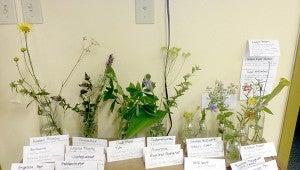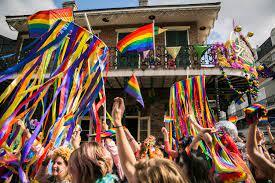Arbo Paths: Discovering Pearl River County’s fall-blooming wildflowers
Published 8:56 am Friday, August 15, 2014

WILD BEAUTY: These wildflowers at the Arboretum Visitor Center, arranged by volunteer Doreen Wheat, offer an overview of “What’s In Bloom” in the exhibits.
Photo by Pat Drackett
By Patricia Drackett
We’re entering the season of late summer wildflowers, when the roadsides and meadows in Pearl River County become a crazy quilt of colors and textures.
Some of the blooms you are passing might be equally at home in your garden, but how do you identify these plants so that you can learn more about them?
In the “old days” it seemed that more people would know the names of the plants we lived among. Perhaps this was due to the fact that several decades ago there was a greater tendency for us to spend time outside. Sometimes Arboretum visitors will bring up stories of treasured times they spent as children, exploring the outdoors.
What do you remember from your own childhood? Is it filled with discoveries made when rocks or logs were overturned and crawling insects scurried away, or wading in cool local streams on hot summer days, or maybe creating a flower necklace for crowning a fairy princess?
The activities that we took for granted as children in an earlier generation may not as common today. But we see our share of parents and grandparents who visit the Arboretum with children in tow, determined that they will also be engaged with nature as they once were.
What would it be like, to have not had this time to connect with nature as a child? Many of us in outdoor-based professions, such as park naturalists, foresters, environmental educators, or wildlife and fisheries, may recall colorful tales of the sights, sounds, and smells of being immersed in nature as a child, and how this led them to decide on a career that could continue this connection for the rest of their lives.
To others, the outside world may play a much smaller role in our lives, but it is there nonetheless. It may be a lovely sunrise that we revel in on our way to work, the delicious smell of earth released by a long-awaited rain, or a bouquet of flowers that a child surprises us with for the dinner table, gathered from a nearby field.
Visitors to the Arboretum will inquire about the flowers spotted blooming in our exhibits. From the early blooms of our yellow pitcher plants, called “buttercups” by local residents, to the splashy swamp sunflowers that elbow their way through autumn grasses, something always seems to be dancing on center stage in our Savanna Exhibit.
Recently, our new volunteer Maureen Wheat assembled arrangements of blooming wildflowers in the Arboretum’s Visitor Center that she identified. Although Maureen didn’t know the names of these flowers found in the exhibits, in a short period of time she identified them using three excellent resources. You and your family can do this, too!
The first resource is the Crosby Arboretum Native Plant Data Base, hosted by the Lady Bird Johnson Wildflower Center, and linked from our website home page. If you spot a plant on a walk through the Arboretum, just refer to this data base when you return home.
Over 200 of our plants are listed, along with photographs and cultural information.
The second identification resource is the www.SoutheasternFlora.comwebsite, which offers a simply method to identify native or naturalized plants without needing a background in botany. Simply enter information such as the color, plant type, or whether the leaves are opposite or alternate, to receive a list of potential plants to pick from. The site also has an informative glossary section of common terms.
Others may prefer a good old-fashioned field guide. For quickly identifying our local wildflowers, one of my favorites is Gil Nelson’s East Gulf Coastal Plain Wildflowers. Maureen agrees! The book also contains a glossary of botanical terms, and information on plant characteristics for those who want to learn more.
Two upcoming programs at the Arboretum will offer excellent opportunities to learn more about our local native plants. “Edible Plants for You and for Wildlife” will be presented by Darla Pastorek on Saturday, August 23 from 1:00 to 2:00 p.m. Darla has an extensive background in native plant propagation, garden maintenance, and management, and will talk about her favorite edible plants, both native and non-native, and how to grow them in your garden.
Members may attend free and the cost for non-members is $5.
On Saturday, August 30 from 10:00 to 11:00 a.m., bring the family for a guided tour of the Arboretum grounds with Director Pat Drackett and discover what is currently blooming in the South Savanna and Pitcher Plant Bog. Bring your camera and dress for walking.
Admission is free for members and $5 for non-members.
Call 601-799-2311 to sign up for programs. The Arboretum is open Wednesday through Sunday from 9 a.m. to 5 p.m. and located in Picayune, off I-59, Exit 4, at 370 Ridge Road (south of Walmart and adjacent to I-59).
FOR FURTHER EXPLORATION: Pick a bouquet of wildflowers (from a site you have permission to enter) and use one or more of the above sources to identify them. Involve a child in your activity!





